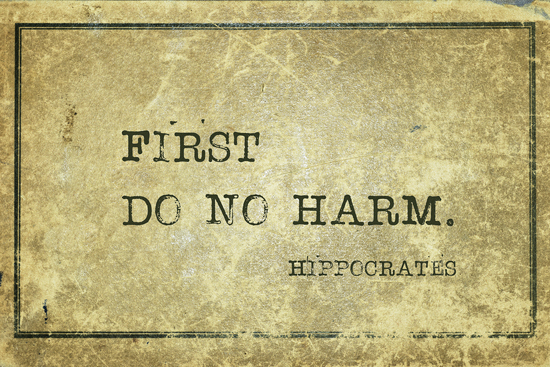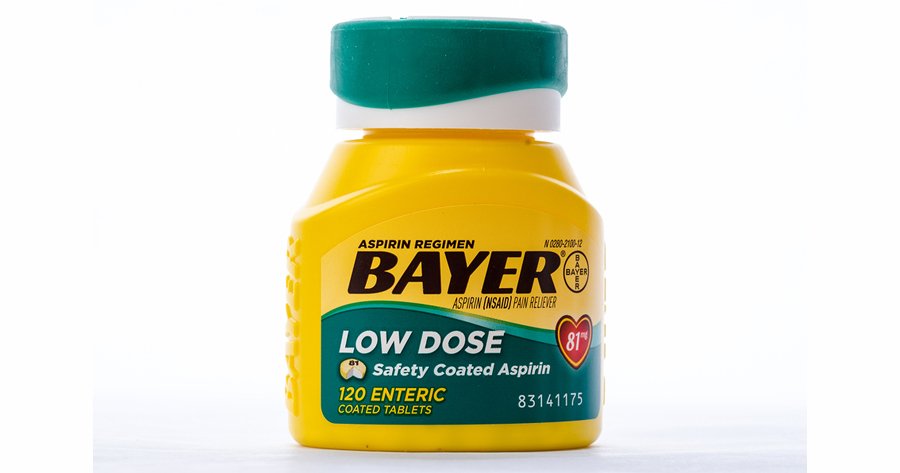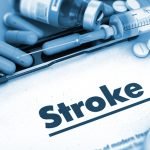Last newsletter we talked about how major studies are beginning to tip the balance in favor of saturated fats. Really, wasn’t it just yesterday that the medical community was sure they were the primary killer in our diets? And previously we’ve explored how the cholesterol theory of heart disease has come under fire from within the medical community, how fierce the debate is among doctors about the usefulness of statin drugs, and hormone replacement therapy is now deemed to kill more women than it helps, when not too long ago it was the number one prescribed drug in the United States.
In this newsletter, we’re going to be talking about daily, low-dose aspirin as recommended by the American Diabetes Association, the American Heart Association, the American Stroke Association, and probably 90% of the doctors’ offices you walk into. 1 “Summary of Recommendations for Aspirin Use to Prevent Cardiovascular Disease.” heart.org. (Accessed 25 Sep 2018.) http://www.heart.org/idc/groups/heart-public/@wcm/@adv/documents/downloadable/ucm_432593.pdf In fact, this message has been so-well inculcated into the American public that over 30% of the adult population now self-reports as taking low-dose aspirin for primary or secondary cardiovascular disease prevention. 2 Mark Stuntz and Brent Bernstein. “Recent trends in the prevalence of low-dose aspirin use for primary and secondary prevention of cardiovascular disease in the United States, 2012–2015?.” Prev Med Rep. 2017 Mar; 5: 183–186. http://www.ncbi.nlm.nih.gov/pmc/articles/PMC5219640/
Perhaps not coincidently, the use of aspirin to prevent heart attacks parallels the use of statin drugs to prevent heart attacks. And by that, I mean they have three things in common.
- Studies have indicated that their use is minorly beneficial for people who have already had one heart attack
- There are no studies that indicate they are beneficial for people who have never had a heart attack
- And they both come with potentially serious side effects
When it comes to statin drugs, although you may believe the medical community is unified in its commitment to their use as a prophylactic, that’s simply not the case. As we mentioned earlier, the debate within the medical community is intense–especially as more and more studies indicate that the rewards do not outweigh the risks unless you’ve already had a heart attack. And even then, there may be better alternatives.
When it comes to aspirin, however, there has not been as much debate, simply because there haven’t been many gold standard studies to support the contrarian point of view. To be fair, there have been several large, randomized trials that have shown that daily aspirin has some mild efficacy when it comes to the secondary prevention of cardiovascular disease and stroke among persons with a history of those diseases.3 “Antithrombotic Trialists’ Collaboration. Collaborative meta-analysis of randomised trials of antiplatelet therapy for prevention of death, myocardial infarction, and stroke in high risk patients.” BMJ 2002;324:71-86. http://www.bmj.com/content/bmj/suppl/2002/01/11/324.7329.71.DC2/ppr71.pdf , 4 Baigent C, Blackwell L, Collins R, et al. “Aspirin in the primary and secondary prevention of vascular disease: collaborative meta-analysis of individual participant data from randomised trials.” Lancet 2009;373:1849-1860. http://europepmc.org/articles/pmc2715005 , 5 Rothwell PM, Algra A, Chen Z, et al. “Effects of aspirin on risk and severity of early recurrent stroke after transient ischaemic attack and ischaemic stroke: time-course analysis of randomised trials.” Lancet 2016;388:365-375. http://www.sciencedirect.com/science/article/pii/S0140673616304688 But as with statin drugs, the evidence supporting a benefit for aspirin therapy in the primary prevention of cardiovascular disease is far less substantive. Nevertheless, it has been “assumed” by the medical community that because senior citizens (more so than among younger persons) have a higher risk of cardiovascular disease, they would see an increased benefit from the use of daily aspirin–even though this benefit may be accompanied by an increased risk of bleeding.6 Whitlock EP, Williams SB, Burda BU, Feightner A, Beil T. “Aspirin use in adults: cancer, all-cause mortality, and harms: a systematic evidence review for the U.S. Preventive Services Task Force. Evidence syntheses no. 132.” AHRQ, 2015. http://www.ncbi.nlm.nih.gov/books/NBK321643/ , 7 Whitlock EP, Burda BU, Williams SB, Guirguis-Blake JM, Evans CV. “Bleeding risks with aspirin use for primary prevention in adults: a systematic review for the U.S. Preventive Services Task Force.” Ann Intern Med 2016;164:826-835. http://annals.org/aim/fullarticle/2513175 , 8 Li L, Geraghty OC, Mehta Z, Rothwell PM. “Age-specific risks, severity, time course, and outcome of bleeding on long-term antiplatelet treatment after vascular events: a population-based cohort study.” Lancet 2017;390:490-499. http://www.sciencedirect.com/science/article/pii/S0140673617307705 In other words, even though the rationale behind it is largely assumptive, doctors enthusiastically recommend it to their patients, the media constantly runs stories about it, and aspirin manufacturers aggressively promote it on television–to the point that aspirin companies had to begin running ads to remind people that aspirin can also be used for pain. The thing is–and the reason we’re talking about this today– that despite the widespread use of low-dose aspirin in elderly persons who do not have a medical indication for aspirin, there is limited evidence that the beneficial effects outweigh the risks in this age group.
Which brings us to the study of the moment, released just days ago; it calls the entire low-dose, aspirin protocol into question.
Effect of Aspirin on Disability-free Survival in the Healthy Elderly
 A five-year study just published in the New England Journal of Medicine sought to address the fact that, although the protocol is taken as gospel within the medical community, information on the use of aspirin to increase a healthy independent life span in older persons (as well as information as to whether daily low-dose aspirin therapy extends disability-free life in healthy seniors) is, in fact, limited and unclear.9 John J. McNeil, Robyn L. Woods, Mark R. Nelson, et al. “Effect of Aspirin on Disability-free Survival in the Healthy Elderly.” NEJM September 16, 2018. http://www.nejm.org/doi/full/10.1056/NEJMoa1800722
A five-year study just published in the New England Journal of Medicine sought to address the fact that, although the protocol is taken as gospel within the medical community, information on the use of aspirin to increase a healthy independent life span in older persons (as well as information as to whether daily low-dose aspirin therapy extends disability-free life in healthy seniors) is, in fact, limited and unclear.9 John J. McNeil, Robyn L. Woods, Mark R. Nelson, et al. “Effect of Aspirin on Disability-free Survival in the Healthy Elderly.” NEJM September 16, 2018. http://www.nejm.org/doi/full/10.1056/NEJMoa1800722
From 2010 through 2014, the researchers enrolled community-dwelling persons in Australia and the United States who were 70 years of age or older (or ≥65 years of age among blacks and Hispanics in the United States) and who did not have cardiovascular disease, dementia, or physical disability. Participants were randomly assigned to receive 100 mg per day of enteric-coated aspirin or a placebo orally. The primary end-point was a composite of death, dementia, or persistent physical disability.
A total of 19,114 persons with a median age of 74 years were enrolled, of whom 9525 were randomly assigned to receive the aspirin and 9589 to receive the placebo. A total of 56.4% of the participants were women, 8.7% were nonwhite, and 11.0% reported previous regular aspirin use. The rate of death, dementia, or persistent physical disability was 21.5 events per 1000 person-years in the aspirin group and 21.2 in the placebo group. In addition, the rate of major hemorrhage was higher in the aspirin group than in the placebo group (3.8% vs. 2.8%). The trial was terminated at a median of 4.7 years of follow-up after a determination was made that there would be no benefit with continued aspirin use in terms of the primary endpoint.
To translate: research into nearly 20,000 older people found those who were generally healthy derived no protective benefit from a regimen of low-dose aspirin — but it did increase their risk of dangerous bleeds.
Incidentally, scientists expressed surprise that overall death rates were higher among people in the study taking aspirin, a finding not seen in previous research. They put this down to a higher rate of deaths from cancer (doubly surprising since aspirin is supposed to be cancer protective) but said this could have been due to chance and cautioned against inferring links between taking aspirin and a greater chance of developing the disease.
Professor Stephen Evans, from the London School of Hygiene and Tropical Medicine said: “The small benefit on heart disease was outweighed by overall increases in other diseases and suggests that in healthy older people without heart disease there is no benefit to low-dose, aspirin.”10 Henry Bodkin. “Daily aspirin for healthy pensioners may do more harm than good, major new study finds.” The Telegraph. 16 September 2018. (Accessed 24 Sep 2018.) http://www.telegraph.co.uk/science/2018/09/16/daily-aspirin-healthy-pensioners-may-do-harm-good-major-new/
So…?
We’re watching foundational medical belief after foundational belief called into question over the last few years. Keep in mind that in 2005 about 43 million adults in the US were on daily, low-dose aspirin.11 Anita Soni. “Aspirin Use among the Adult U.S. Noninstitutionalized Population, with and without Indicators of Heart Disease, 2005. MEPS. July 2007. (Accessed 26 Sep 2018.) http://meps.ahrq.gov/data_files/publications/st179/stat179.pdf Today it’s around 73 million.12 Stuntz And now it looks like they’re not only not receiving any benefit–but are likely putting themselves at greater risk of dying. And again, that’s on top of saturated fat, cholesterol, statins, and HRT–just to name a few. That’s a whole lot of people potentially being led down the proverbial garden path. How can this possibly happen? When doctors are this sure something is healthy and true, shouldn’t we be able to take it to the bank?
And the answer is: not necessarily. As to the reasons, we’ve talked about them before in different newsletters. Let’s briefly touch on them again.
Clinical Studies Aren’t What You Think They Are
Let me begin by saying that clinical trials are not useless. They are the foundation of modern medicine and modern science. Without them, we might still be treating diseases by trying to regulate bad humors and expel evil spirits. But, and this is very, very important to understand, clinical trials are not the be-all and end-all of scientific knowledge. They are certainly important, but they often contain serious flaws and biases, not to mention being subject to the vagaries of human greed and duplicity. For example, it has been revealed that many ideas for medical journal articles are generated by pharmaceutical executives who have also titled them, drafted outlines, paid writers to draft the manuscripts, recruited academic authors, and identified publications to run the articles — all without disclosing the companies’ roles to journal editors or readers.13 DUFF WILSON. “Wyeth’s Use of Medical Ghostwriters Questioned.” Gainesville.com. December 13, 2008. (Accessed 26 Sep 2018.) http://www.gainesville.com/article/20081213/ZNYT04/812133017/1003 To put it simply, those studies would have to be considered not very reliable–assuming you knew which ones they were. In the end, individual clinical trials should be viewed merely as divining rods that “possibly” point us in the direction of important conclusions. Certainly, multiple studies that come to the same conclusion are a better indicator than individual studies–but even then, the result is not guaranteed. If the same bias is carried from study to study (confusing synthetic vitamin E with full complex, natural vitamin E, for example), you still end up with a flawed conclusion, just reached multiple times. The historical record shows that many so-called evidence-based procedures and drugs eventually turn out to be ineffective or even harmful over time.14 Shannon Brownlee. “Newtered.” Washington Monthly 2007 (Accessed 26 Sep 2018.) http://washingtonmonthly.com/2007/10/01/newtered-2/ But once we understand the limitations of the different types of studies, we can see that decades, centuries, and even millennia of anecdotal information can be equally effective in “possibly” pointing the way to important healing discoveries.
For a better understanding of the complete story, check out: Everything You’ve Always Wanted to Know About Clinical Studies.
Much Less Is Validated by Studies than You Think
Western medicine may be “scientific,” but it is far less evidenced-based than is claimed by its proponents. According to Michael Millenson, three-time Pulitzer Prize nominee as a health-care reporter for the Chicago Tribune, “More than half of all medical treatments, and perhaps as many as 85 percent, have never been validated by clinical trials.”15 Michael L. Millenson, AB: “Demanding Medical Evidence: Doctors and Accountability in the Information Age.” The Robert Wood Johnson Foundation, Issue 2, September 1998. http://www.amazon.com/Demanding-Medical-Excellence-Accountability-Information/dp/0226525880 That means, ipso facto, that as few as 15 percent of all medical treatments may be supported by studies. And remember, a chunk of that 15 percent may be flawed. Ouch!
And Even When You Have Valid Studies, Most Doctors Don’t Follow Them
And, even more telling, according to a study published in the Journal of General Internal Medicine, only 11% of physicians rely on evidenced based medicine for all their treatments. When push comes to shove, some 90% of doctors like to go with their gut at least some of the time.16 Finlay A McAlister, Ian Graham, Gerald W Karr, and Andreas Laupacis. “Evidence-Based Medicine and the Practicing Clinician.” J Gen Intern Med. Apr 1999; 14(4): 236–242. http://www.ncbi.nlm.nih.gov/pmc/articles/PMC1496564/
Many Doctors Simply Aren’t Aware of the Latest Studies
 A 2017 study published in the BMJ found that within the same hospital (except those physicians treating high volumes of patients), patients treated by older physicians had higher mortality rates than patients cared for by younger physicians.17 Tsugawa Yusuke, Newhouse Joseph P, Zaslavsky Alan M, Blumenthal Daniel M, Jena Anupam B. Physician age and outcomes in elderly patients in hospital in the US: observational study BMJ 2017; 357 :j1797. http://www.bmj.com/content/357/bmj.j1797 Huh? I mean, you would think that clinical skills and knowledge accumulated by more experienced physicians would lead to improved quality of care.
A 2017 study published in the BMJ found that within the same hospital (except those physicians treating high volumes of patients), patients treated by older physicians had higher mortality rates than patients cared for by younger physicians.17 Tsugawa Yusuke, Newhouse Joseph P, Zaslavsky Alan M, Blumenthal Daniel M, Jena Anupam B. Physician age and outcomes in elderly patients in hospital in the US: observational study BMJ 2017; 357 :j1797. http://www.bmj.com/content/357/bmj.j1797 Huh? I mean, you would think that clinical skills and knowledge accumulated by more experienced physicians would lead to improved quality of care.
But on the other hand, physicians’ skills can also become outdated as scientific knowledge, technology, and clinical guidelines change. Incorporating these changes into clinical practice is time consuming and can at times be overwhelming.18 Schwartz JS, Lewis CE, Clancy C, et al. “Internists’ practices in health promotion and disease prevention.” A survey. Ann Intern Med 1991;357:46-53. http://annals.org/aim/article-abstract/704370/internists-practices-health-promotion-disease-prevention-survey , 19 Czaja R, McFall SL, Warnecke RB, Ford L, Kaluzny AD. “Preferences of community physicians for cancer screening guidelines.” Ann Intern Med 1994;357:602-8. http://annals.org/aim/article-abstract/707281/preferences-community-physicians-cancer-screening-guidelines , 20 Fehrenbach SN, Budnitz DS, Gazmararian JA, Krumholz HM. “Physician characteristics and the initiation of beta-adrenergic blocking agent therapy after acute myocardial infarction in a managed care population.” Am J Manag Care 2001;357:717-23.http://europepmc.org/abstract/med/11464429
Here’s the deal.
A 2004 study published in the Journal of the Medical Library Association counted articles (including letters, editorials, and other commentaries) published in March 2002.21 Alper BS, Hand JA, Elliott SG, et al. “How much effort is needed to keep up with the literature relevant for primary care?” Journal of the Medical Library Association. 2004;92(4):429-437. http://www.ncbi.nlm.nih.gov/pmc/articles/PMC521514/ They estimated that 7,287 articles were published monthly in 341 journals that were active at the time. The researchers, focused on just one field of medicine (they used epidemiology for the study), estimated it would take 627.5 hours per month to evaluate these articles. That works out to 20 hours a day, just to stay current in your field, and that, of course, is impossible. And the problem has only gotten worse in the 14 years since that study was published with increased access to studies from researchers throughout the world and the advent of digital publishing allowing for those medical articles and studies to reach a wider audience.
Now, in medical school, you really do spend close to 20 hours a day studying and learning, so you’re mostly current. But once you begin practicing medicine, you have maybe an hour a day that you can spend keeping current. The rest of the time you’re treating patients or doing bureaucratic paperwork. That means you’re falling behind at the rate of 600 hours a month, 7,200 hours a year, and about 216,000 hours over the course of your career. Quite simply, if you learned that aspirin was good for the heart while you were in medical school, the odds of your keeping up to date with the new studies that challenge that assumption, are minimal.
And Let’s Not Forget
Doctors often have mandates imposed on them that affect patient care. And those mandates are often based on old information. Getting large bureaucracies to change direction is like getting a giant oil tanker to turn around. It takes a lot of effort…and a lot of time.
Also, HMO’s have greatly cut reimbursements to doctors. For practices to stay afloat financially, doctors must see more patients. That takes time, and that cuts into the already minimal time available to keep current.
And Finally, There’s Inertia
 In the end, in addition to everything else we’ve already discussed, there’s inertia. Once an idea gets established in the medical community, it can take decades to change it. Start with a flawed study. Follow that with several more studies that use the flawed study as the basis for their own work. And before you know it, this incorrect idea is now the “current” thinking, and so it gets taught in medical school. Students graduate and incorporate this “current” idea into their practice–and everything “seems” to work, even if the idea hasn’t really been validated. But a handful of doctors are uncomfortable with the idea and keep chipping away at it with new studies that seem to disprove it–prove, in fact, that it might even be dangerous…or deadly.
In the end, in addition to everything else we’ve already discussed, there’s inertia. Once an idea gets established in the medical community, it can take decades to change it. Start with a flawed study. Follow that with several more studies that use the flawed study as the basis for their own work. And before you know it, this incorrect idea is now the “current” thinking, and so it gets taught in medical school. Students graduate and incorporate this “current” idea into their practice–and everything “seems” to work, even if the idea hasn’t really been validated. But a handful of doctors are uncomfortable with the idea and keep chipping away at it with new studies that seem to disprove it–prove, in fact, that it might even be dangerous…or deadly.
And then the inertia kicks in.
Many doctors who read the articles are resistant to change and say, “These results are interesting and are worth further study, but we need to be careful not to overreact and throw out treatments that we know have worked well for years.” And an even greater number of doctors who don’t keep up with the latest studies don’t even bother to think about changing. “I don’t need new studies. It’s always worked for me and my patients. My gut tells me to keep doing it.”
And so, it continues for years, even decades, until one day a tipping point is reached, and in an instant every doctor is doing a 180, now onboard with the new idea and preaching it to their patients without ever a “my bad” for all the patients that were harmed over the years. Can you say trans fats, promoted as a better alternative to saturated fats FOR DECADES until they were suddenly deemed deadly? And then every doctor in the country is telling people to stop eating them with no acknowledgment of the millions of people they killed in the decades they promoted them. Oh yeah, and without even a tip of the hat to the alternative health community that was telling people how unhealthy trans fats were from day one.
Bottom line: doctors save lives, except when they don’t. And when the medical community gets things wrong, it can cost lives–in many cases thousands of lives (can you say Vioxx), and in some cases, hundreds of thousands (prescription opioids), or even millions of them (as with saturated fats and trans fats).
If you would like to read a real-life example of how hard it can be to turn a bad idea around once it has taken root in the medical community, check out The Rise and Fall of the Radical Mastectomy. In this case, we’re talking about more than a half century!
Now, as to where low-dose aspirin fits in on the spectrum, only time will tell.

References
| ↑1 | “Summary of Recommendations for Aspirin Use to Prevent Cardiovascular Disease.” heart.org. (Accessed 25 Sep 2018.) http://www.heart.org/idc/groups/heart-public/@wcm/@adv/documents/downloadable/ucm_432593.pdf |
|---|---|
| ↑2 | Mark Stuntz and Brent Bernstein. “Recent trends in the prevalence of low-dose aspirin use for primary and secondary prevention of cardiovascular disease in the United States, 2012–2015?.” Prev Med Rep. 2017 Mar; 5: 183–186. http://www.ncbi.nlm.nih.gov/pmc/articles/PMC5219640/ |
| ↑3 | “Antithrombotic Trialists’ Collaboration. Collaborative meta-analysis of randomised trials of antiplatelet therapy for prevention of death, myocardial infarction, and stroke in high risk patients.” BMJ 2002;324:71-86. http://www.bmj.com/content/bmj/suppl/2002/01/11/324.7329.71.DC2/ppr71.pdf |
| ↑4 | Baigent C, Blackwell L, Collins R, et al. “Aspirin in the primary and secondary prevention of vascular disease: collaborative meta-analysis of individual participant data from randomised trials.” Lancet 2009;373:1849-1860. http://europepmc.org/articles/pmc2715005 |
| ↑5 | Rothwell PM, Algra A, Chen Z, et al. “Effects of aspirin on risk and severity of early recurrent stroke after transient ischaemic attack and ischaemic stroke: time-course analysis of randomised trials.” Lancet 2016;388:365-375. http://www.sciencedirect.com/science/article/pii/S0140673616304688 |
| ↑6 | Whitlock EP, Williams SB, Burda BU, Feightner A, Beil T. “Aspirin use in adults: cancer, all-cause mortality, and harms: a systematic evidence review for the U.S. Preventive Services Task Force. Evidence syntheses no. 132.” AHRQ, 2015. http://www.ncbi.nlm.nih.gov/books/NBK321643/ |
| ↑7 | Whitlock EP, Burda BU, Williams SB, Guirguis-Blake JM, Evans CV. “Bleeding risks with aspirin use for primary prevention in adults: a systematic review for the U.S. Preventive Services Task Force.” Ann Intern Med 2016;164:826-835. http://annals.org/aim/fullarticle/2513175 |
| ↑8 | Li L, Geraghty OC, Mehta Z, Rothwell PM. “Age-specific risks, severity, time course, and outcome of bleeding on long-term antiplatelet treatment after vascular events: a population-based cohort study.” Lancet 2017;390:490-499. http://www.sciencedirect.com/science/article/pii/S0140673617307705 |
| ↑9 | John J. McNeil, Robyn L. Woods, Mark R. Nelson, et al. “Effect of Aspirin on Disability-free Survival in the Healthy Elderly.” NEJM September 16, 2018. http://www.nejm.org/doi/full/10.1056/NEJMoa1800722 |
| ↑10 | Henry Bodkin. “Daily aspirin for healthy pensioners may do more harm than good, major new study finds.” The Telegraph. 16 September 2018. (Accessed 24 Sep 2018.) http://www.telegraph.co.uk/science/2018/09/16/daily-aspirin-healthy-pensioners-may-do-harm-good-major-new/ |
| ↑11 | Anita Soni. “Aspirin Use among the Adult U.S. Noninstitutionalized Population, with and without Indicators of Heart Disease, 2005. MEPS. July 2007. (Accessed 26 Sep 2018.) http://meps.ahrq.gov/data_files/publications/st179/stat179.pdf |
| ↑12 | Stuntz |
| ↑13 | DUFF WILSON. “Wyeth’s Use of Medical Ghostwriters Questioned.” Gainesville.com. December 13, 2008. (Accessed 26 Sep 2018.) http://www.gainesville.com/article/20081213/ZNYT04/812133017/1003 |
| ↑14 | Shannon Brownlee. “Newtered.” Washington Monthly 2007 (Accessed 26 Sep 2018.) http://washingtonmonthly.com/2007/10/01/newtered-2/ |
| ↑15 | Michael L. Millenson, AB: “Demanding Medical Evidence: Doctors and Accountability in the Information Age.” The Robert Wood Johnson Foundation, Issue 2, September 1998. http://www.amazon.com/Demanding-Medical-Excellence-Accountability-Information/dp/0226525880 |
| ↑16 | Finlay A McAlister, Ian Graham, Gerald W Karr, and Andreas Laupacis. “Evidence-Based Medicine and the Practicing Clinician.” J Gen Intern Med. Apr 1999; 14(4): 236–242. http://www.ncbi.nlm.nih.gov/pmc/articles/PMC1496564/ |
| ↑17 | Tsugawa Yusuke, Newhouse Joseph P, Zaslavsky Alan M, Blumenthal Daniel M, Jena Anupam B. Physician age and outcomes in elderly patients in hospital in the US: observational study BMJ 2017; 357 :j1797. http://www.bmj.com/content/357/bmj.j1797 |
| ↑18 | Schwartz JS, Lewis CE, Clancy C, et al. “Internists’ practices in health promotion and disease prevention.” A survey. Ann Intern Med 1991;357:46-53. http://annals.org/aim/article-abstract/704370/internists-practices-health-promotion-disease-prevention-survey |
| ↑19 | Czaja R, McFall SL, Warnecke RB, Ford L, Kaluzny AD. “Preferences of community physicians for cancer screening guidelines.” Ann Intern Med 1994;357:602-8. http://annals.org/aim/article-abstract/707281/preferences-community-physicians-cancer-screening-guidelines |
| ↑20 | Fehrenbach SN, Budnitz DS, Gazmararian JA, Krumholz HM. “Physician characteristics and the initiation of beta-adrenergic blocking agent therapy after acute myocardial infarction in a managed care population.” Am J Manag Care 2001;357:717-23.http://europepmc.org/abstract/med/11464429 |
| ↑21 | Alper BS, Hand JA, Elliott SG, et al. “How much effort is needed to keep up with the literature relevant for primary care?” Journal of the Medical Library Association. 2004;92(4):429-437. http://www.ncbi.nlm.nih.gov/pmc/articles/PMC521514/ |












Many good points here,
Many good points here, however when it comes to aspirin please inform yourself by reading this article I link here to get a broader perspective on aspirins effects on physiology.
Aspirin is an antioxidant that protects against lipid peroxidation, but it also stimulates mitochondrial respiration. It can inhibit abnormal cell division, but promote normal cell division. It can facilitate learning, while preventing excitotoxic nerve injury. It reduces clotting, but it can decrease excessive menstrual bleeding. These, and many other strangely beneficial effects of aspirin, strongly suggest that it is acting on very basic biological processes, in a coherent way.
I am not allowed to share my link here, but if you want to read a deeply informing article about aspirin search for : aspirin ray peat
you will find the article named: Aspirin, brain, and cancer.
Enjoy.
What a great article! Thanks!
What a great article! Thanks!